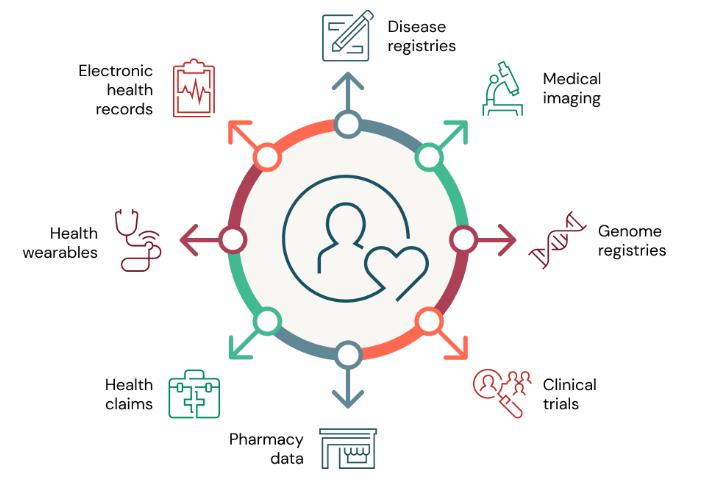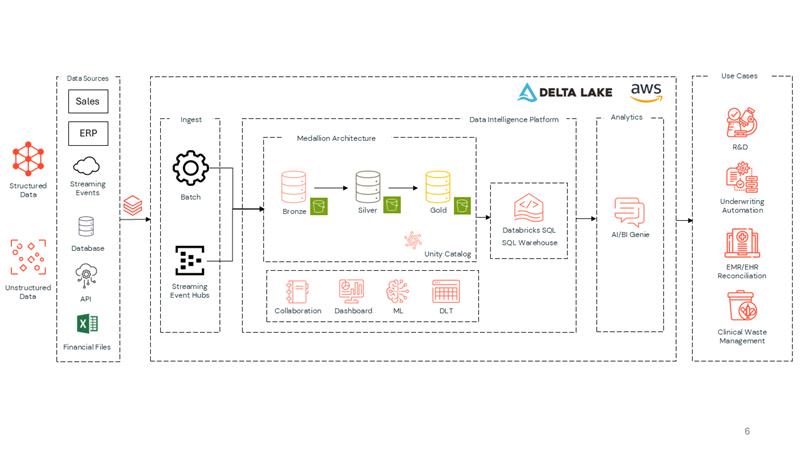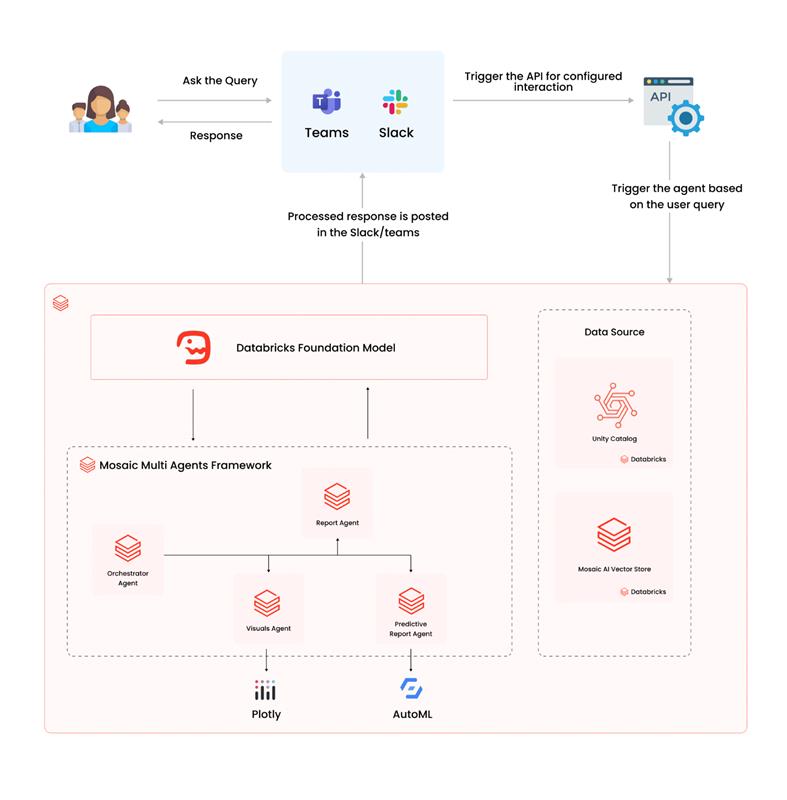Modern healthcare and pharmaceutical firms face a critical need in modernizing their data and cloud infrastructure to better understand and support the needs of their patients given their status as “mission critical” organizations. Historically these companies have been reactive, and the modern age necessitates proactive and dynamic responses to a growing range of problems in providing the right treatment for their patients.
Healthcare companies generate massive amounts of unstructured data, with a single patient producing over 80 MB annually, resulting in petabytes of valuable but often inaccessible information. The U.S. healthcare industry produced 1.2 billion clinical documents in 2015, a number that has since grown due to increased digitization. This wealth of unstructured text data from various sources such as e-digital forms, online portals and PDFs contains crucial insights that, when combined with EHRs, can provide a comprehensive view of patient health and inform drug discovery, treatment pathways, and safety assessments at a population level.
Continue Reading
To summarize, healthcare companies are trying to solve 4 pillars to improve their data and analytical capabilities:
- Handling rapidly scaling volume of data in a consistent manner
- Managing the veracity of data sources and integrations (both structured and unstructured)
- Building trust and ensuring reliability of the data fed to analytical systems
- Ensuring compliance with regulatory frameworks like HIPAA, GDPR, FDA and HITECH

Empowering healthcare insights through a Lakehouse
To break through these challenges, organizations require a shift towards an integrated, AI-driven and scalable approach.
Here comes in zeb and Databricks — our expertise in unifying all healthcare data into one place providing a single source of truth, data governance, support for both batch and real-time workloads and a foundation for AI and machine learning capabilities.
Leveraging the Databricks Lakehouse provides a modern and scalable approach to data integration, combining the best traits of a data warehouse and data lake to provide a comprehensive view of all healthcare and pharmaceutical entities eliminating data silos and ensuring there is a unified repository of all data sources in one view. By seamlessly integrating EMRs, EHRs, Insurance and Healthcare Claims, and Imaging/Genomic data into system for further analysis and analytics.
Governance and compliance with critical regulatory frameworks are ensure with Unity Catalog for fine-grained access control (RBAC and ABAC) at the role and attribute level along with metadata management and lineage tracking, enhancing data security and compliance. Through Lakehouse Monitoring, businesses can implement robust data validation processes that ensure consistency and reliability.

Intelligent document processing with Mosaic AI on Databricks
Process vast amounts of unstructured data hidden behind layers of documents, PDFs, and claims with Databricks Mosaic AI’s intelligent document processing framework. Here’s how to get started –
1. Assessment and planning
Audit Existing Workflows
- Conduct a comprehensive analysis of current document workflows, identifying inefficiencies and bottlenecks. The data foundation using the Databricks lakehouse will ensure this data is assimilated and massaged for consumption into AI.
- Prioritize high-impact workflows for automation, such as claims processing, patient onboarding, and EHR updates.
2. IDP architecture on Databricks and Mosaic AI
- AI Capabilities: Leverage Mosaic AI models Optical Character Recognition (OCR), Natural Language Processing (NLP), and Large Language Models (LLMs) for document analysis and form a knowledge base using a RAG implementation.
- Compliance using Unity Catalog: Both platforms support robust security frameworks to meet HIPAA, GDPR, FDA, HITECH and other regulatory requirements.
Key Components
- Unity Catalog: For governance, access control, and versioning of data and models.
- Mosaic AI Gateway: To monitor access to generative AI models.
- MLflow: For tracking model development and experimentation.
Document Processing
1. OCR with Mosaic AI: Convert scanned documents into machine-readable text.
2. NLP for Information Extraction: Leverage Mosaic AI’s NLP capabilities to extract relevant data fields like patient names, diagnoses, or insurance details.
3. Classification: Use Mosaic AI’s model-serving endpoints to classify documents based on structure and content.
Workflow Automation
- Automate common tasks such as:
- Routing insurance claims for processing.
- Updating patient records in real-time.
- Generating appointment summaries.
3. Compliance and security measures
Data Security
- Enable advanced encryption protocols through Databricks’ Unity Catalog for secure data management.
Governance
- Track document access and modifications with audit trails.
Regulatory Compliance
- Ensure adherence to HIPAA, GDPR, and other healthcare regulations by leveraging Databricks’ built-in compliance features.
4. Continuous monitoring and optimization
Monitoring Frameworks
- Use Databricks Lakehouse Monitoring to track key metrics like processing speed, accuracy, and model drift.
Optimization
- Regularly update the IDP system by fine-tuning models using Mosaic AI’s Foundation Model Fine-Tuning capabilities.
Analytics
- Analyze workflow performance using dashboards built on Databricks SQL for actionable insights.
Benefits of using Databricks with Mosaic AI for IDP
1. Scalability: The platform supports real-time data integration across large datasets for high-volume document processing.
2. Flexibility: Mosaic AI allows customization of models for specific healthcare use cases like claims adjudication or patient onboarding.
3. Improved Efficiency: Automating repetitive tasks reduces manual errors, allowing staff to focus on patient care.

By following this framework, healthcare organizations can leverage Databricks and Mosaic AI to build robust IDP systems that enhance operational efficiency while maintaining compliance and improving patient outcomes.
To conclude, Databricks, combined with Mosaic AI, offers significant benefits for Intelligent Document Processing in Healthcare organizations. The platform’s scalability supports real-time data integration across large datasets, enabling high-volume document processing. Mosaic AI provides flexibility by allowing customization of models for specific healthcare use cases such as claims adjudication and patient onboarding. Improved efficiency is achieved by automating repetitive tasks, which reduces manual errors and allows staff to focus on patient care. By following this framework, healthcare organizations can leverage Databricks and Mosaic AI to build robust document processing systems systems that enhance operational efficiency while maintaining compliance and improving patient outcomes. This integration can accelerate R&D, optimize clinical trials, enhance drug safety monitoring, streamline manufacturing processes, reduce patient readmissions, sort disease risks more effectively, minimize fraud, waste, and abuse, and improve chronic condition management, ultimately driving significant improvements in operational efficiency and patient outcomes.